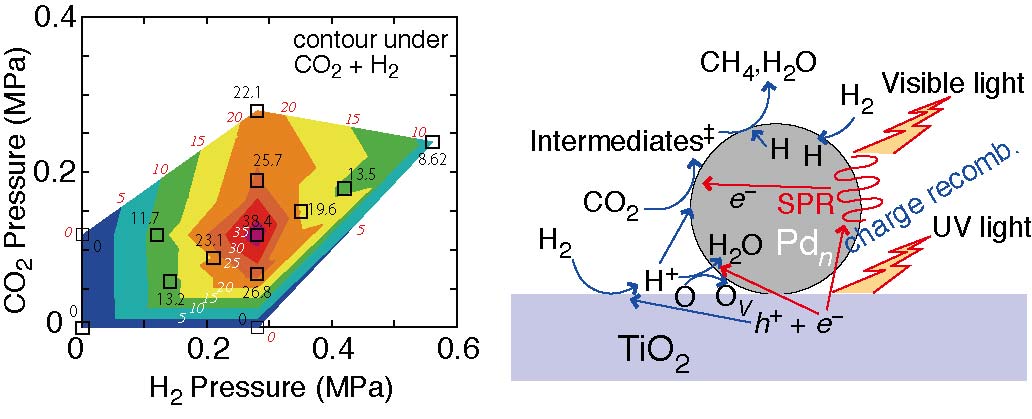|
Efficient Volcano-type Dependence of Photocatalytic CO2 Conversion into Methane Using Hydrogen at Reaction Pressures up to 0.80 MPa
|
Shogo Kawamura, Hongwei Zhang, Masayuki Tamba, Takashi Kojima, Masaya Miyano, Yusuke Yoshida, Mao Yoshiba, and Yasuo Izumi
Journal of Catalysis, 345, 39-52 (2017).![]() [The
PDF file]
[The
PDF file]
Photocatalytic conversion of CO2 into fuels could mitigate global warming and energy shortage simultaneously. In this study, the reaction pressure was optimized for CO2 reduction by H2. The major products were methane, CO, and methanol, and the observed catalytic activity order was Cu or Pd on TiO2 üŌ Ag/ZrO2 ü` g-C3N4 > Ag/Zn3Ga-layered double hydroxide ü` BiOCl. Hot/excited electrons due to surface plasmon resonance could be transferred to CO2-derived species and the remaining positive charge could combine with excited electrons in the semiconductor. As the levels of hot/excited electrons became more negative, the catalysts became more active except for Ag/ZrO2 and Ag/Zn3Ga-LDH probably due to lower charge separation efficiency for intrinsic semiconductor or hydroxide. The reaction order was controlled by the partial pressure of H2, demonstrating preferable adsorption of H on Pd. The photoconversion of CO2 into methane was optimum at P(H2) = 0.28 MPa and P(CO2) = 0.12 MPa, but the rates gradually dropped at higher partial pressures due to adsorption of CO2 being hindered by H.

Chiba University > Graduate School of Science > Department of Chemistry > Dr. Yasuo Izumi Group